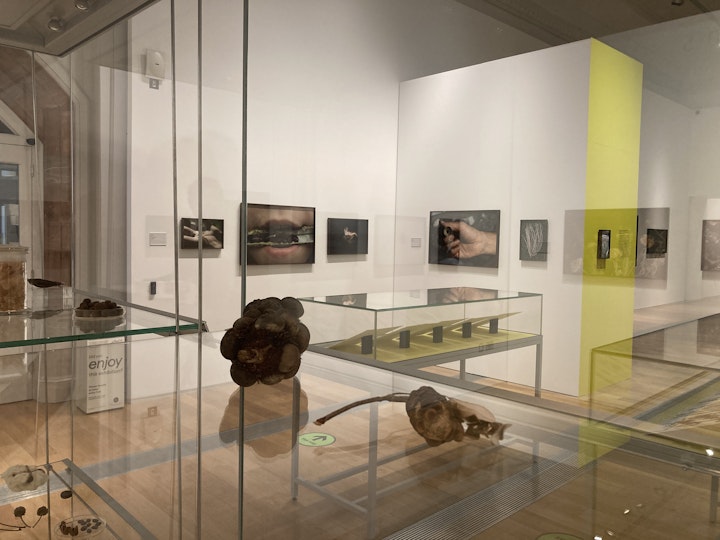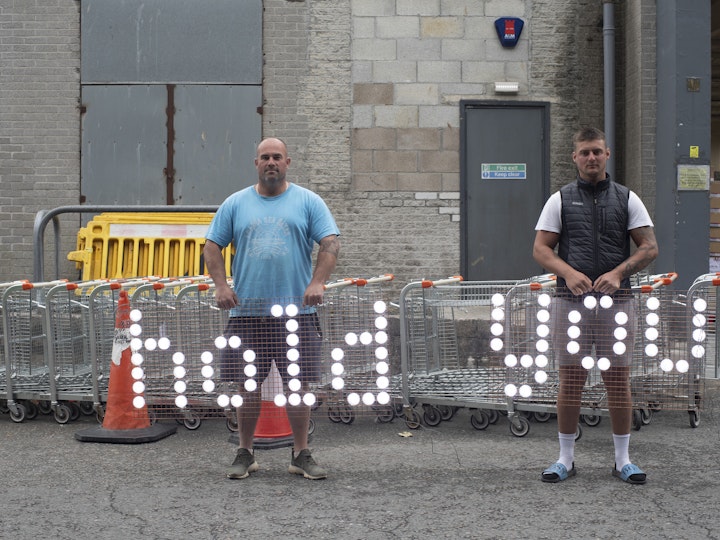JM Colberg Interview with Léonie Hampton
JM Colberg Interview with Léonie Hampton
Interview for Foam Magazine Autumn 2009 edition
Q: The largest section of work in your portfolio is dedicated to portrayals of families in various cities. How did you get interested in this?
A: I don’t know if I was ever interested in portraying ‘whole families’ more that I felt ex- cited to work within four walls and closely with the same group of people. I saw the work of Richard Billingham and Nick Wapplington, and I felt inspired to follow their lead by work- ing within the family. I looked at a lot of photography at this time, and this approach woke me up and got me excited to take pictures and start to find my own language. I wanted to cherish this approach and use it to explore and find my own questions. ‘Family’ is a fairly universal subject of interest. As a child I used to love looking through old family albums building narratives around the pictures. I’d stare at the pictures pretending that I knew the people that were now dead, and I’d imagine their lives. I think photographing within the family unit was an instinctive choice, a way that I felt comfortable to photograph strangers that then became friends.
Q: “Access” seems to be the magic word for photographers. How did you find those fami- lies and how did you convince them to let you be a spectator of their life?
A: I’m always asked this question. It’s very simple. I just show people my work. They like it and want to be a part of it, or they don’t. I find this first approach terrifying. But as of yet, no one has ever said no. You must give people pictures of themselves. This is really impor- tant to build trust, and as a result further doors normally open. I also take time to be more than just a passive spectator. I’ll do my best to pick up the family rules and quirks and, where appropriate, offer what I can to contribute. Reading with the kids, teaching English. Whatever is appreciated. I try to share myself with them, to give a little back in return for all the generosity and openness given to me. I also try to pay attention to when I am not wanted around. For a brief while I try to become a part of the family, and far more time is spent just being with them and getting to know one another than actually taking pictures. But when I do take pictures I am not trying to be invisible. I am the photographer, that is my role. Do my subjects ever ‘perform’ for me? Some perhaps do, others carry on as nor- mal. But I notice that by taking the role as the witness, people seem to become themselves. People are often genuinely surprised that I’m interested in them and their lives, and they realise they’re actually quite proud of what they have. That’s certainly the bit I’m interested in.
Q: With “In the Shadow of Things”, you’ve now turned your camera on your own family. What made you do this?
A: Because I believe that this is not a dress rehearsal. This is it. It’s my family that I care most about. I came to a point when I wanted to face things that needed to be faced. I needed to see if I was able to make sense of some of the unsaid problems that seemed to be holding us all back. I see the process like walking into a house and going from room to room, opening all the windows and doors to let fresh air flow again. It was never a con- scious intention to photograph other people’s families and then my own. But I think that working with other people slowly reassured me that ‘love’ in a family is by no means the one dimensional love we witness time and time again in mainstream blockbuster movies. I feel privileged to have glimpsed some of the odder facets of love in other people’s lives. This ultimately gave me the courage to look at my own little nest.
Q: With other people’s families, as an outsider the photographer might be shut out from a lot of what is going on. But inside one’s own family, one might know too much. Doesn’t this make portraying one’s own family hard?
A: You take that knowledge with you wherever you are, and it influences the way you see your own family or other people’s. I aim to overcome this, and I hope to photograph in a more instinctive and less informed way. I think this challenge applies to whatever I am pho- tographing- to empty one’s mind and respond in a simple and open way to what is in front of me. When I was photographing other people’s families I felt like I was trying to crack an egg, to get inside, while photographing my own family feels quite the opposite, trying to get out of the egg. I understand that sensation less in terms of knowledge, but more in terms of the intricate emotional terrain one steps into when photographing one’s own family. It con- sumes me emotionally, and I am trying to articulate those emotions, to make sense of them and then look to other horizons.
It has been interesting for me to realise that I’m not trying to ‘portray’ my family in the same way I did with previous families. This project is much more about coming to under- stand myself and my relationship with my mother who I have always been extremely close to. I am so much more invested in every image than I have ever been before. I think I might have ventured outside the ‘safety’ of the photojournalistic approach to photography, where the subject is ‘the other’, regardless of the photographer’s compassion. Yes, I have used my camera as a kind of shield to protect me during some almost unbearably intense times, but when I look over the images it has taken, it’s like looking into a very revealing mirror!
















